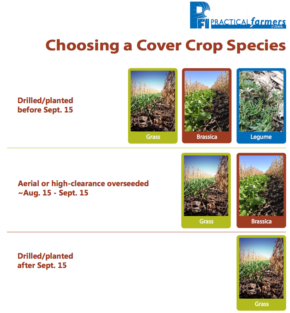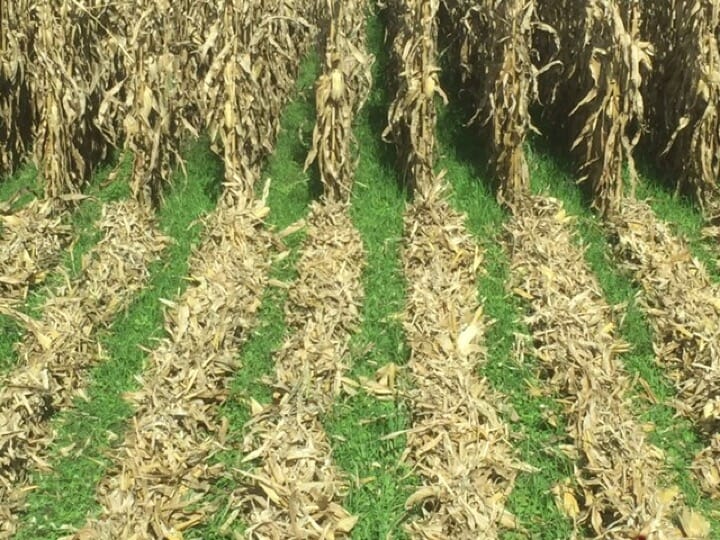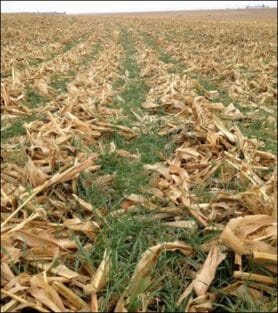5 Steps Before Aerial Seeding Cover Crops

Click on this photo read more about seeding recommendations from PFI’s multi-site cover crop variety trial.
Cover crop planting season is coming for the northern Cornbelt! Many farmers are gearing up to aerial seed cover crops but how can we make sure we have green fields in the fall during harvest?
Take some hints from cover cropper Nathan Anderson who farms near Cherokee. In Nathan’s part of the state, sufficient rainfall is critical to aerial seeding cover crops. “What we don’t want is overseeding cover crops into a thick, dark corn canopy. We need more sunlight on the canopy floor followed by a good rain to achieve successful cover crop establishment. Don’t get started too soon.”
Even if a pilot is available when the corn isn’t we risk the chance of seeds germinating and not surviving.

Sept. 7. Aerial seeded winter small grains + mustards and other brassicas and forage barley make a nice green carpet at harvest. Photo courtesy Nathan Anderson Aurelia, IA taken October 5, 2016.
Steps for aerial seeding cover crops:

Aerial seeded cereal rye cover crop into standing corn, drought 2012. Photo courtesy Nathan Anderson Aurelia, IA.
- Check when your corn is predicted to reach black layer. University of Missouri has a handy calculator to help you. Try to overseed within a couple days through Mid-September. For soybeans overseed when you see first yellow leaves.
- Is your seed secured? Did you contact your pilot and your fields have been outlined? Use Practical Farmers cover crop business directory to find seed and seeding services.
- Is rainfall predicted? Timely and sufficient rainfall is critical. Farmers observe that at least 1/2″ rainfall is needed followed by another storm to get the seed germinated and established,
- An on time harvest is the last component for success. Getting the crop off helps the cover crop grow.
- Have time to drill the crop following grain harvest? A drilled cover crop will almost always be more consistent than an aerial seeded cover crop but many times we are short on labor and time during harvest to be able to chase the combine with a drill full of cover crop seed. If the above steps are taken aerial seeding cover crops can result in successful establishment.
More resources:
Check out Tim Smith’s video of aerial seeding cover crops on his farm into standing soybeans.
Check out Jacob Bolson’s aerial seeding blog last year too.
Farminar: Successfully Aerially Seeding Cover Crops.
